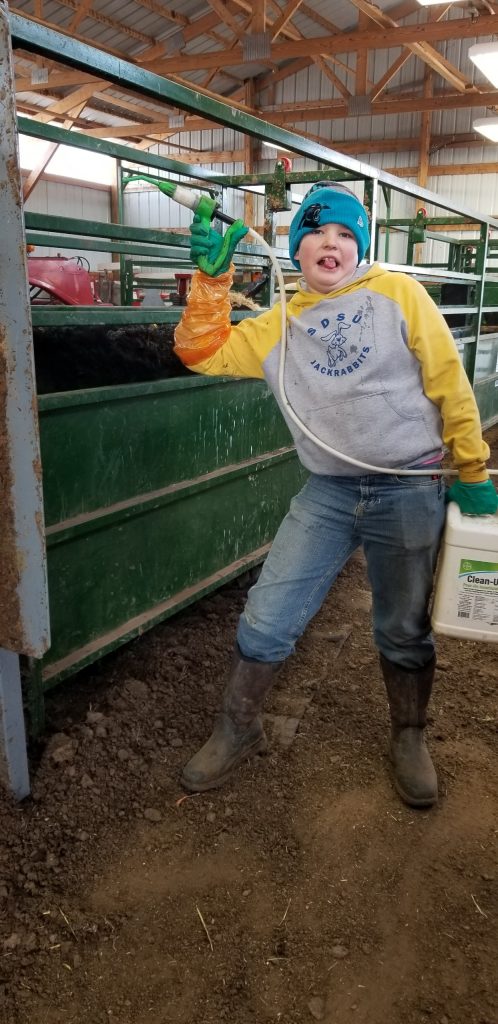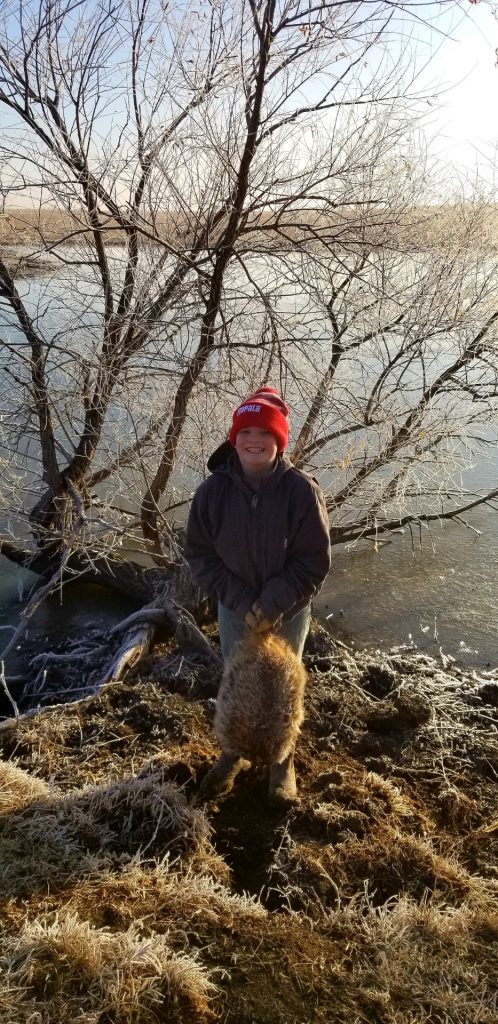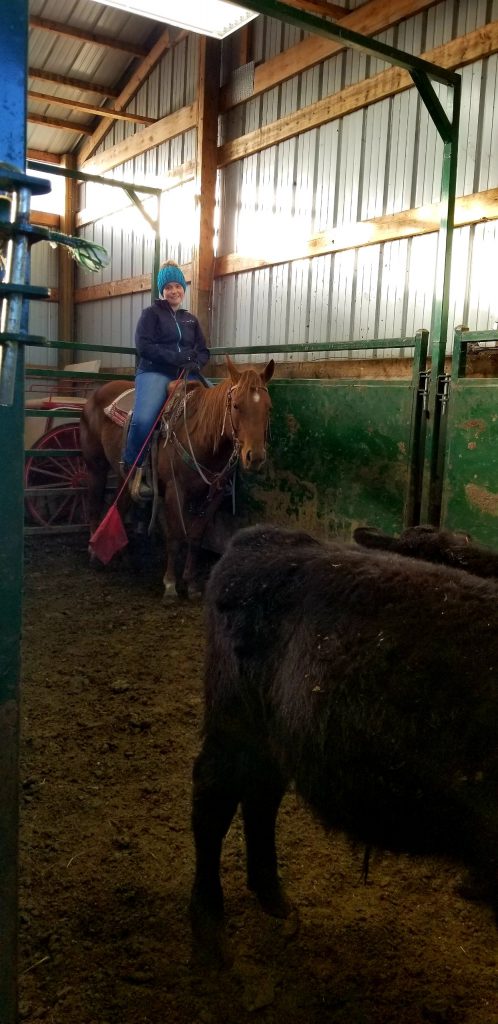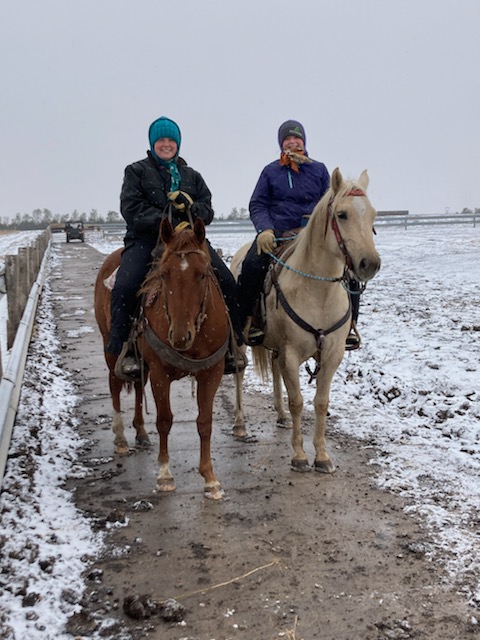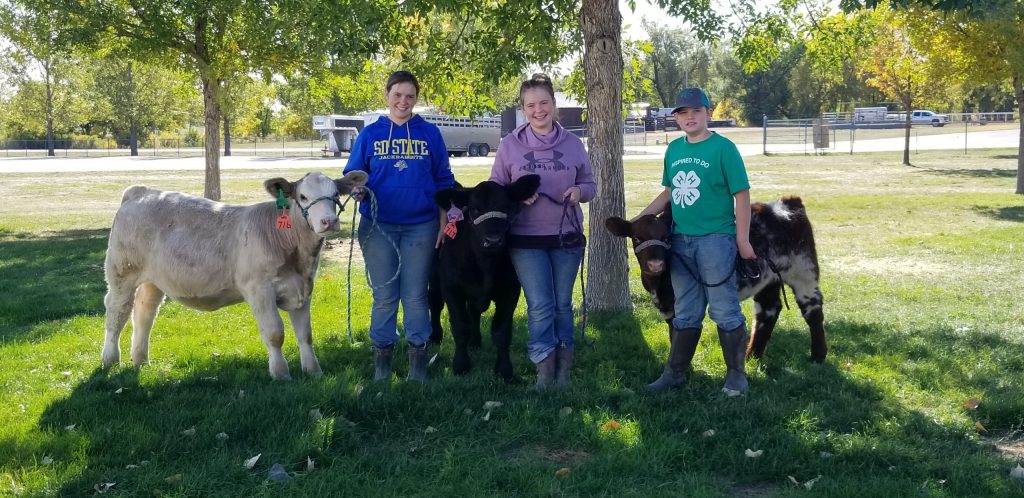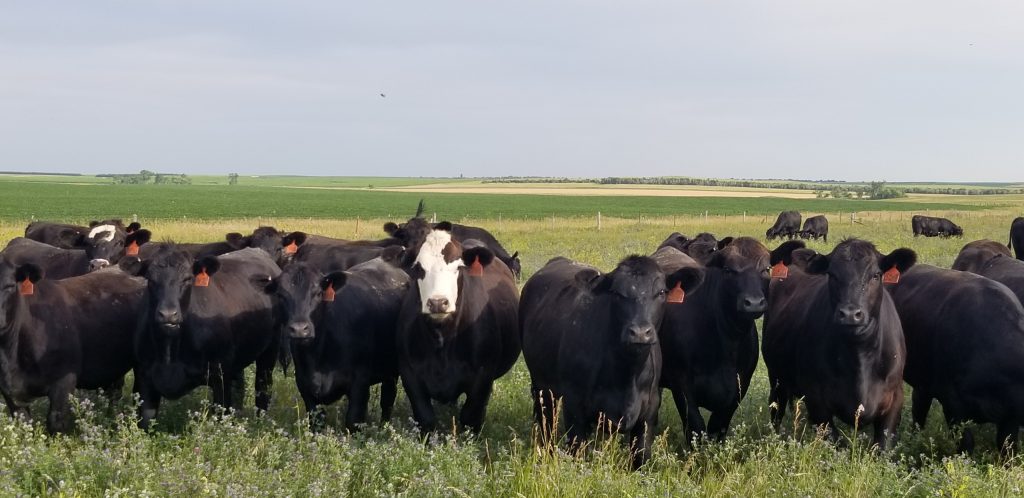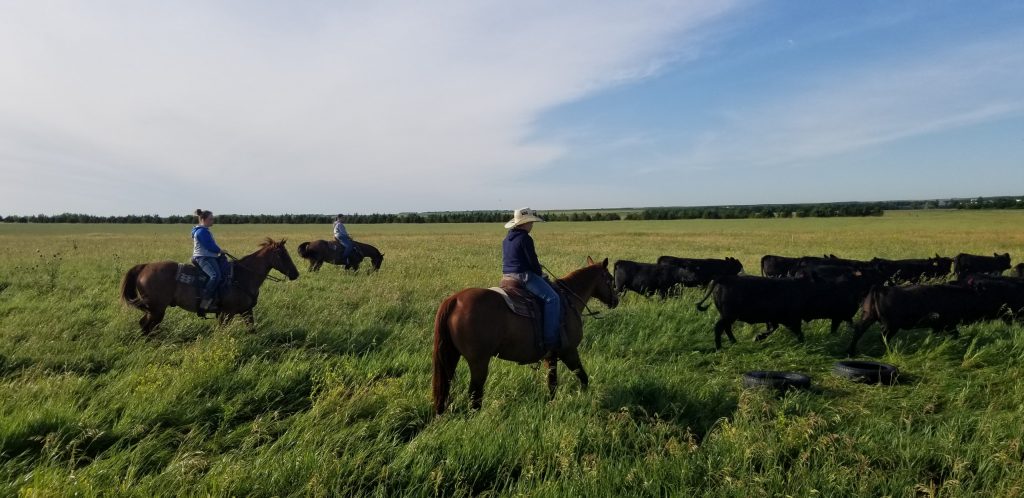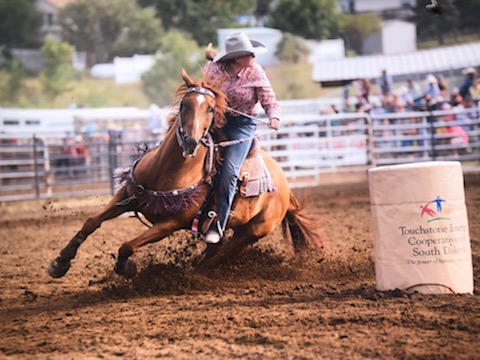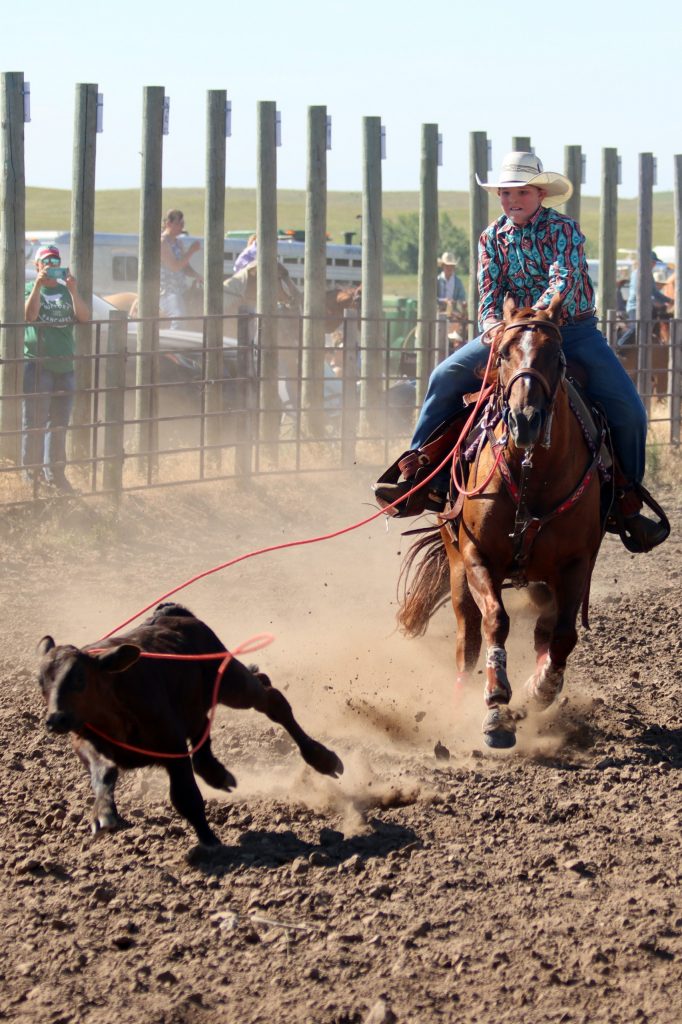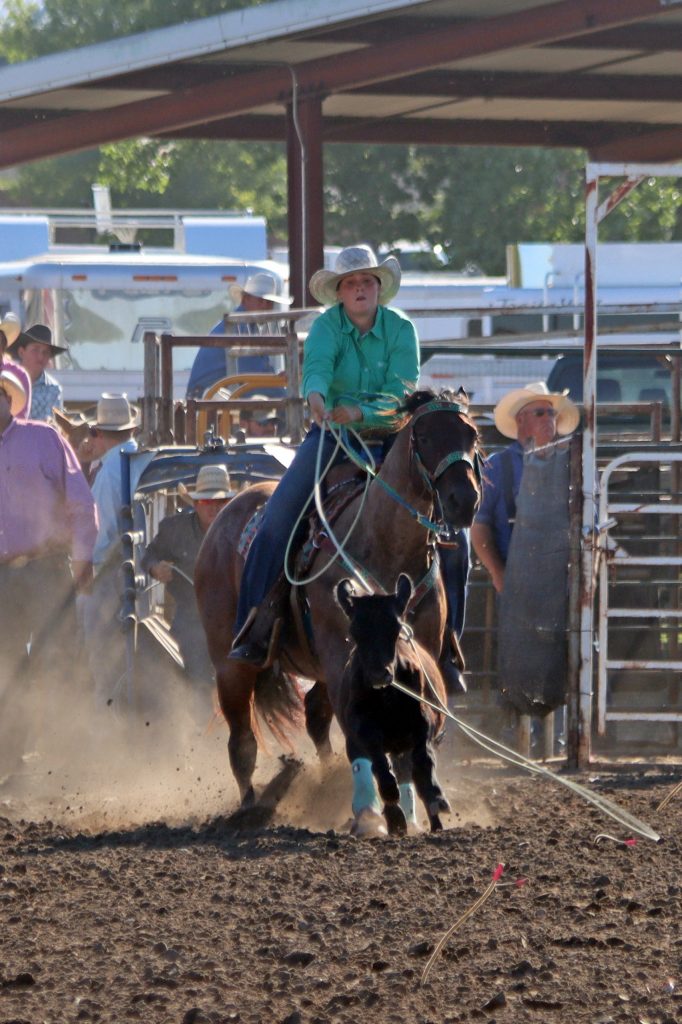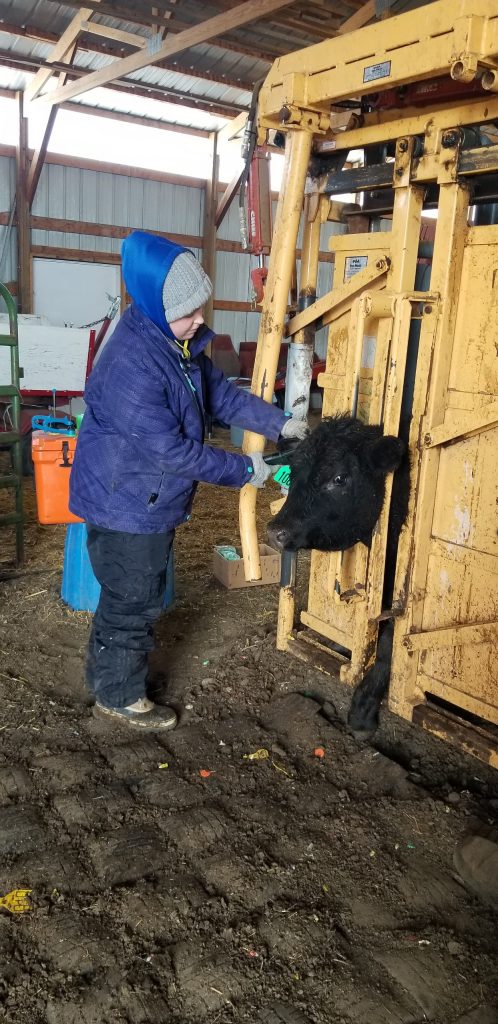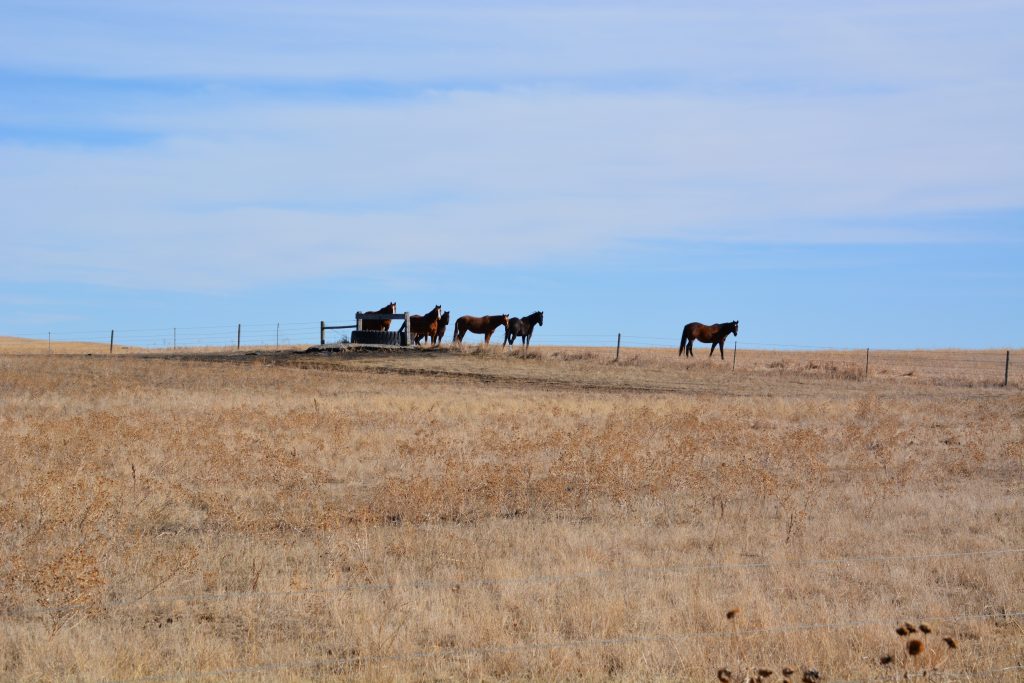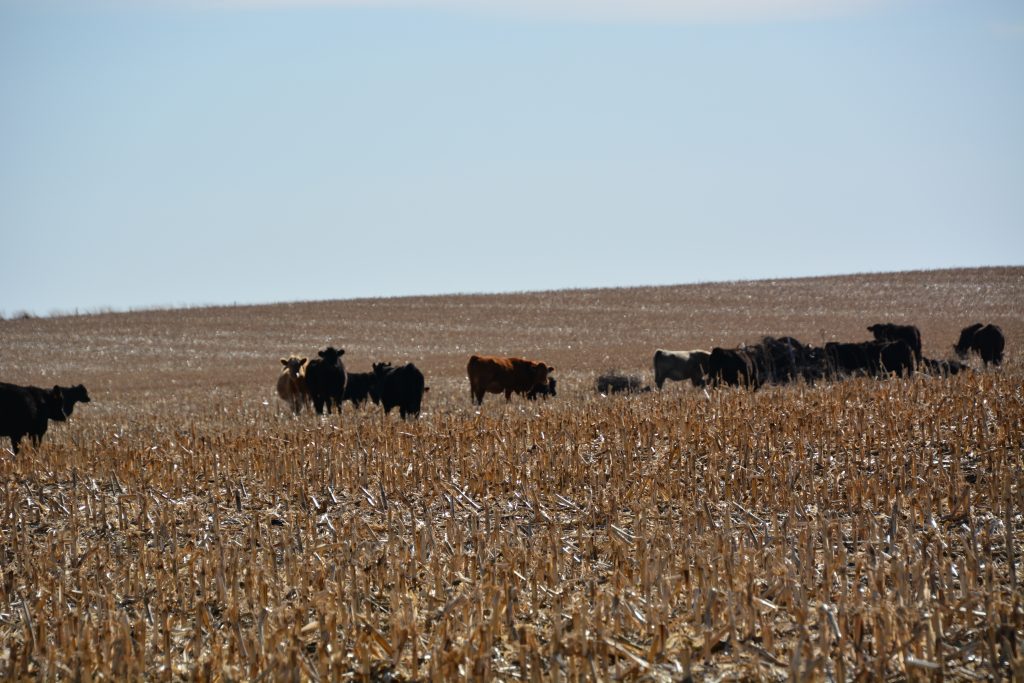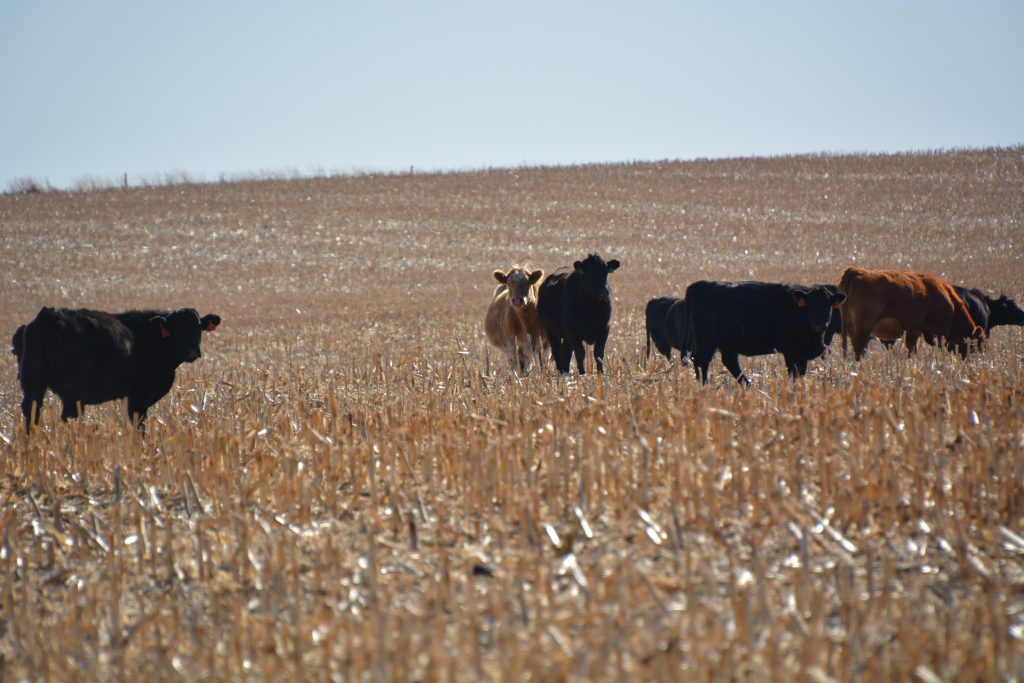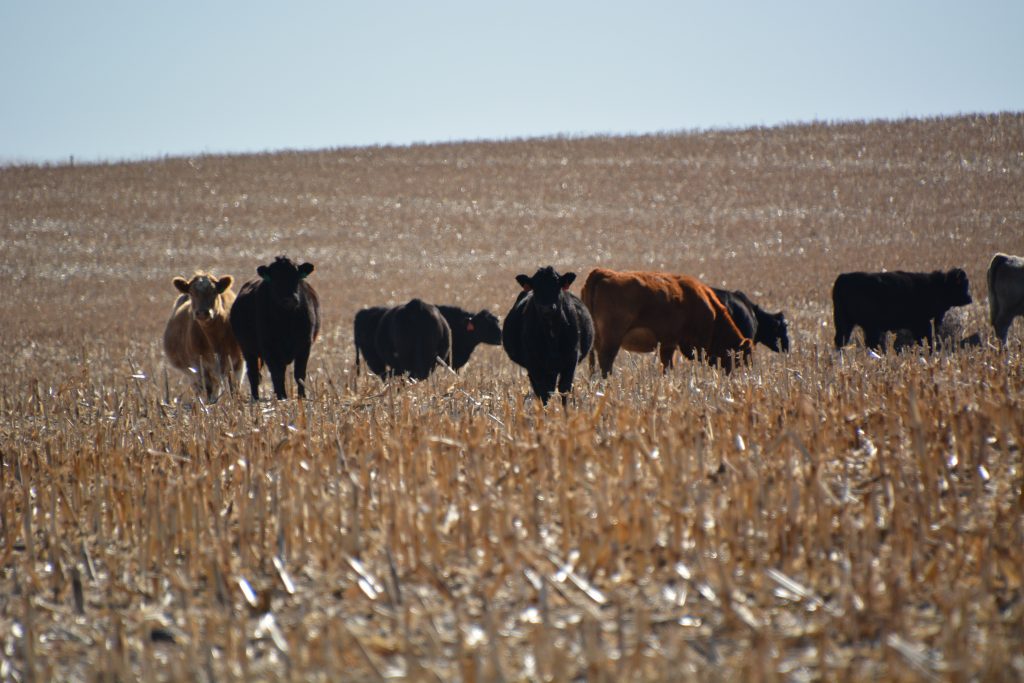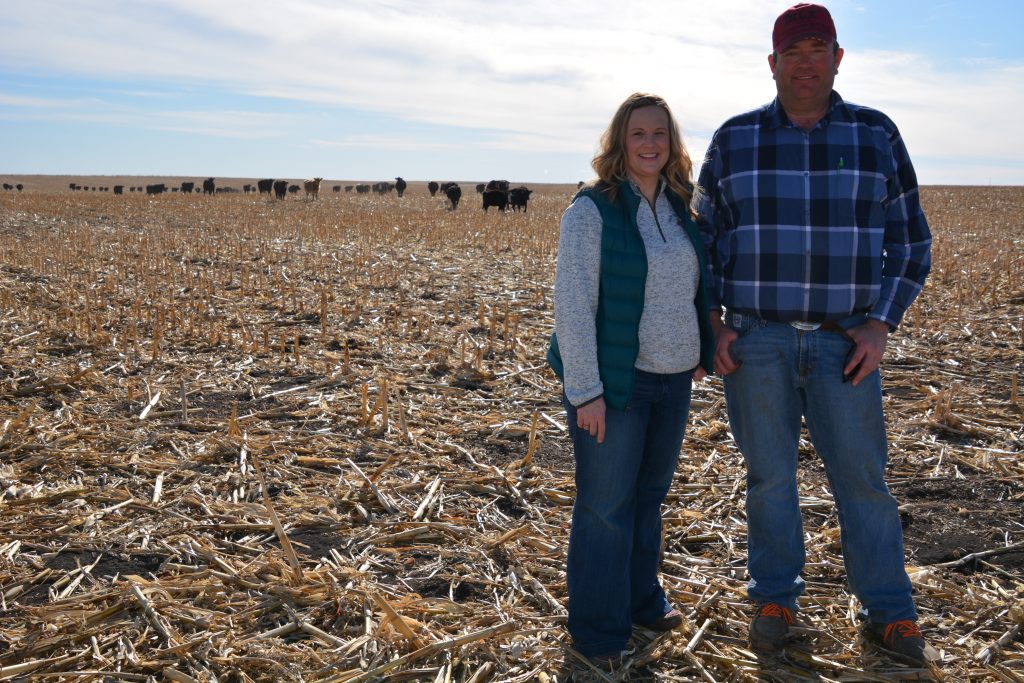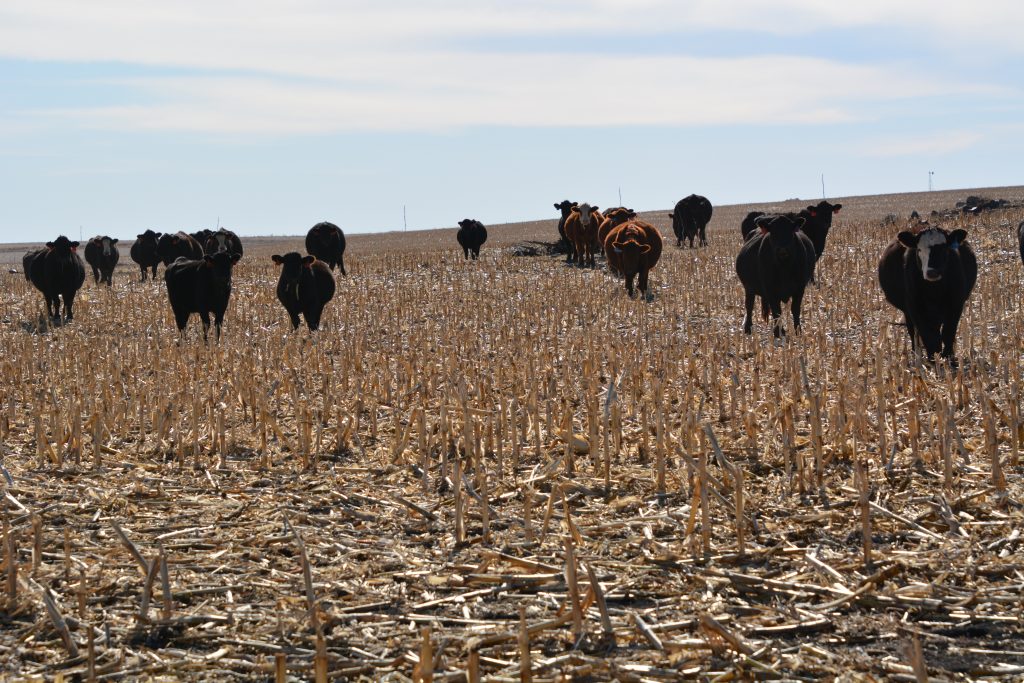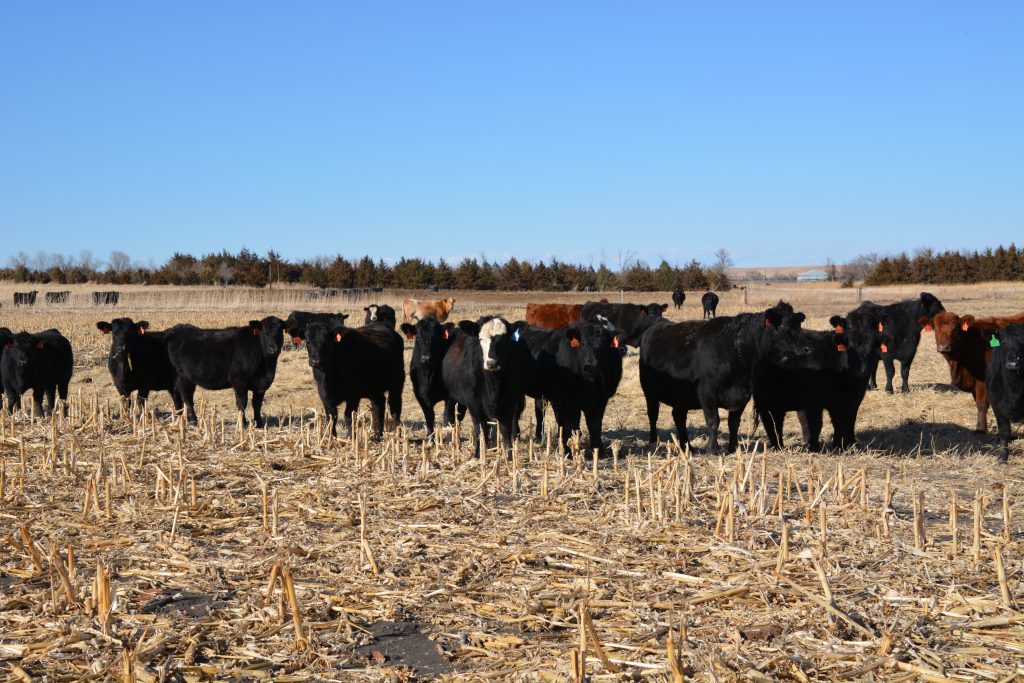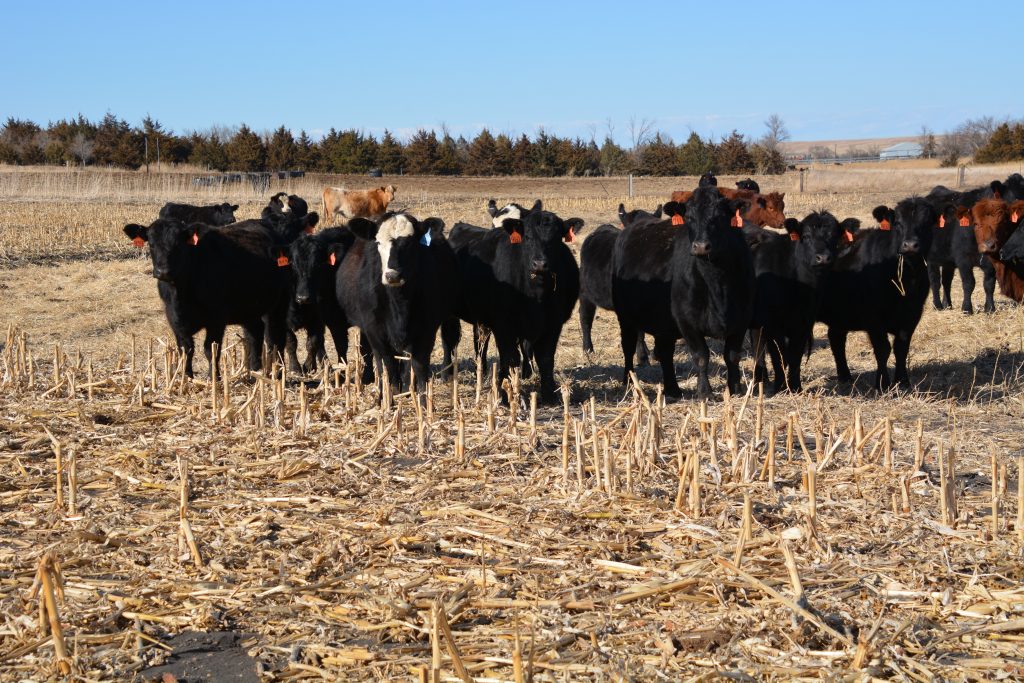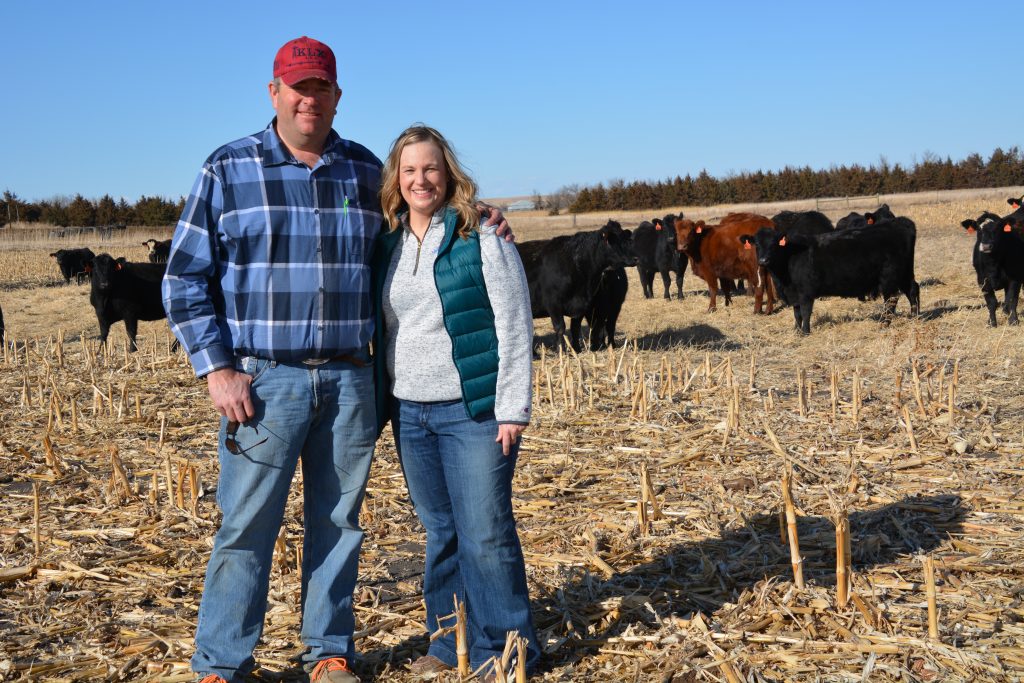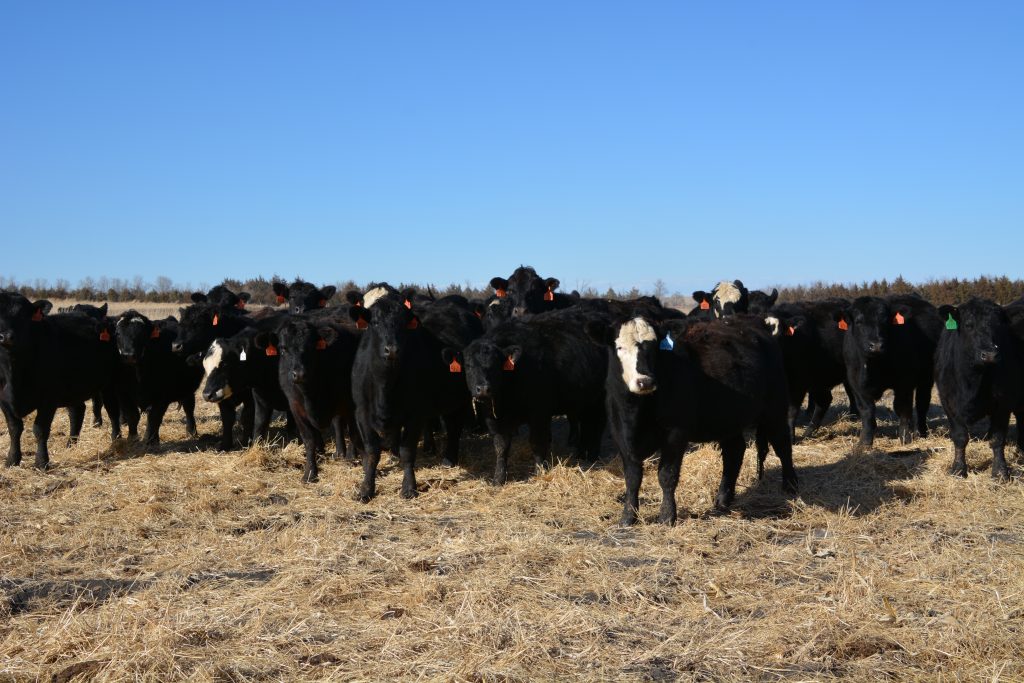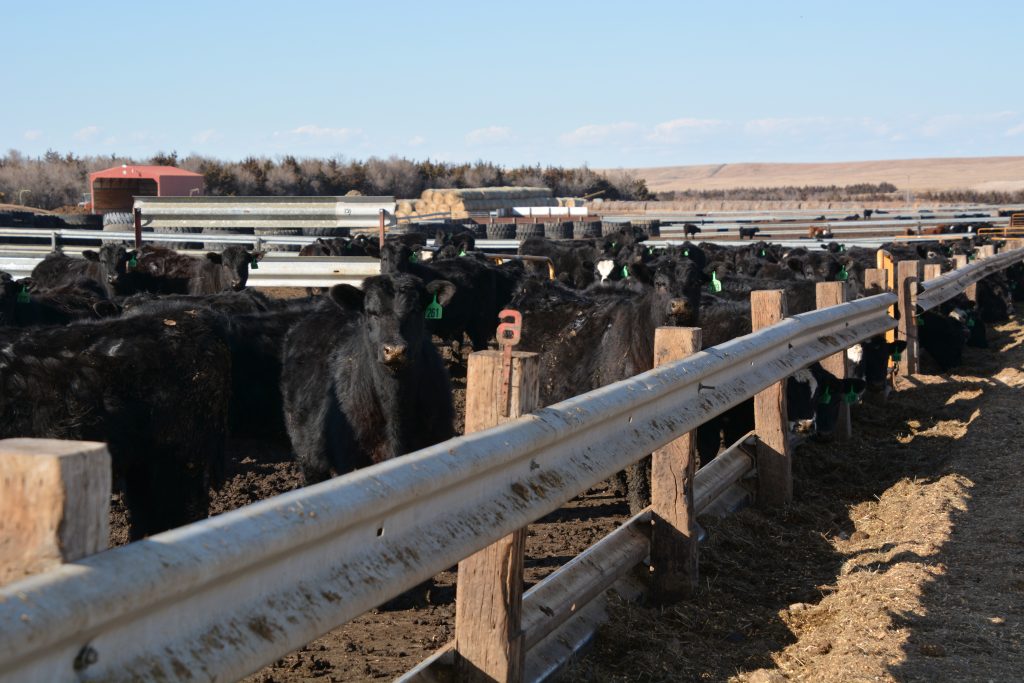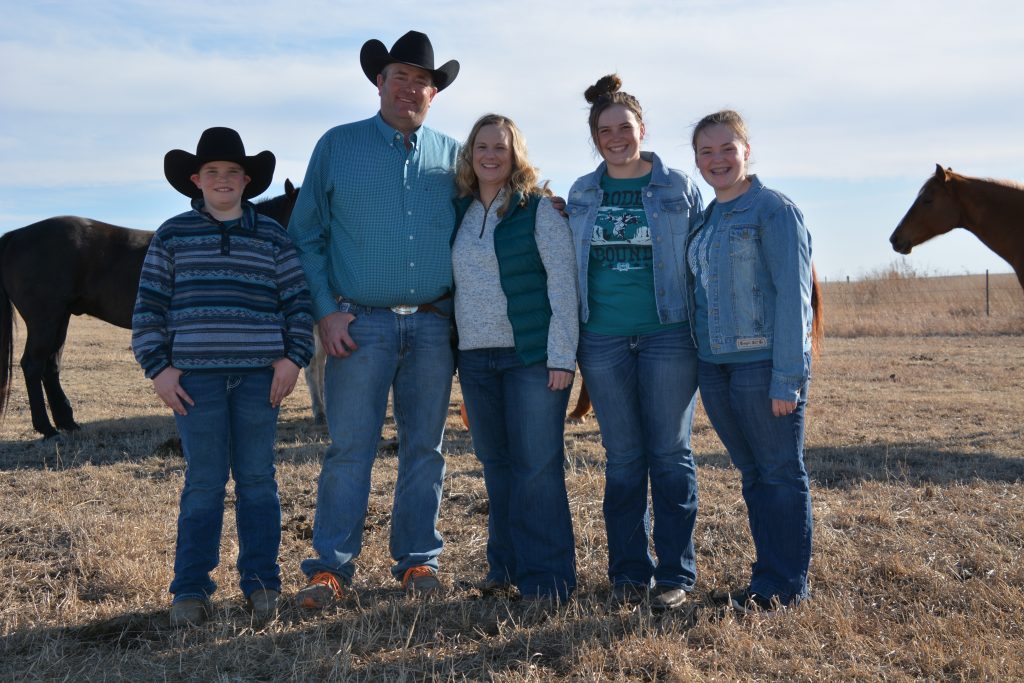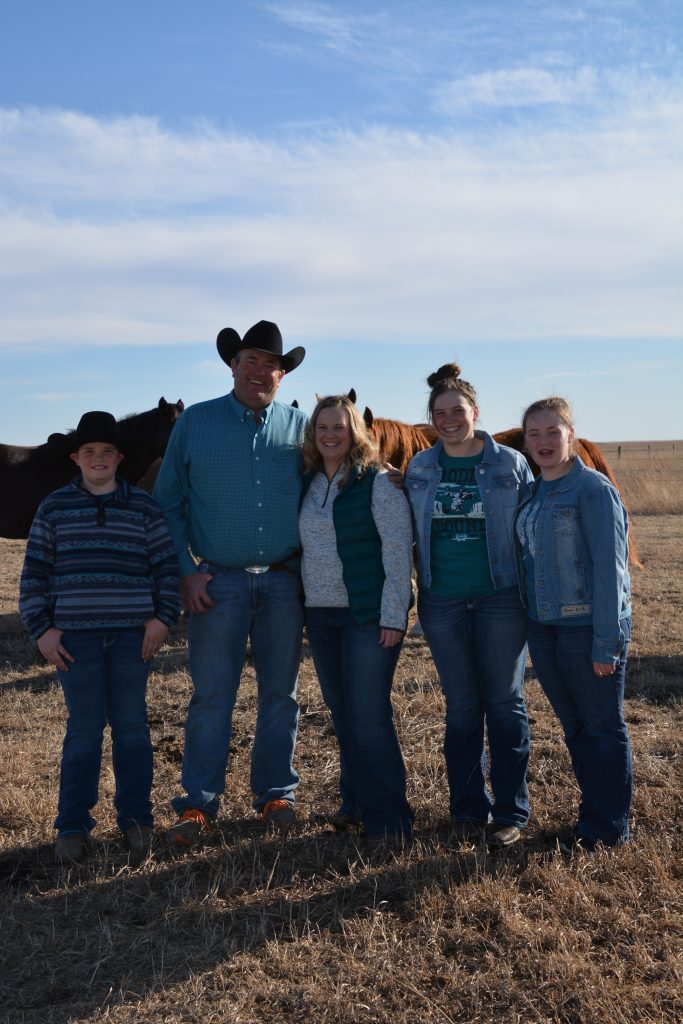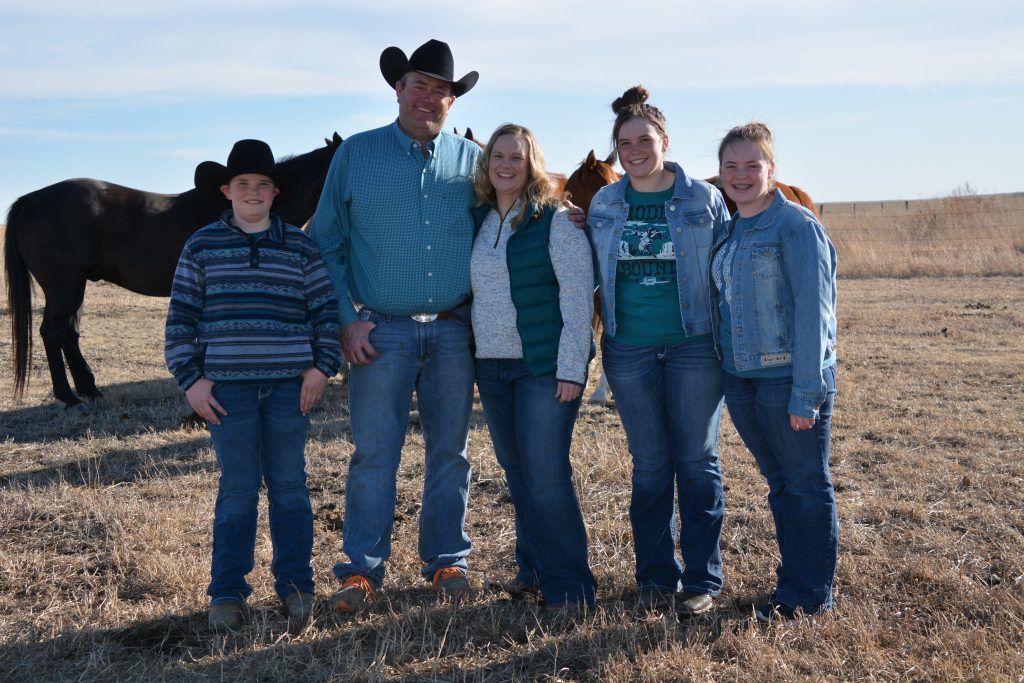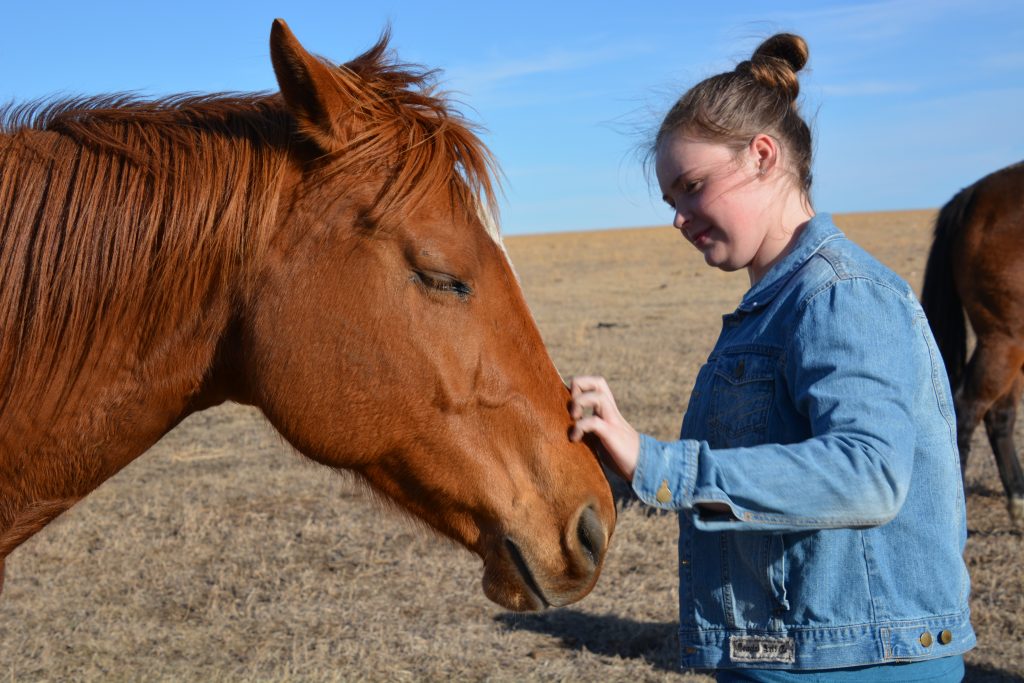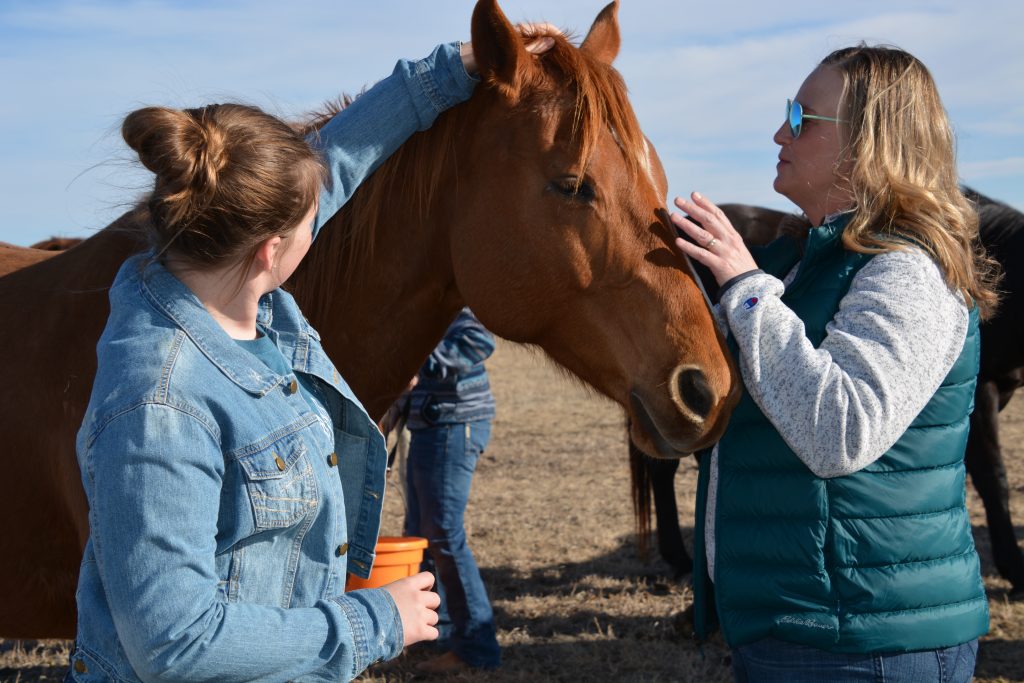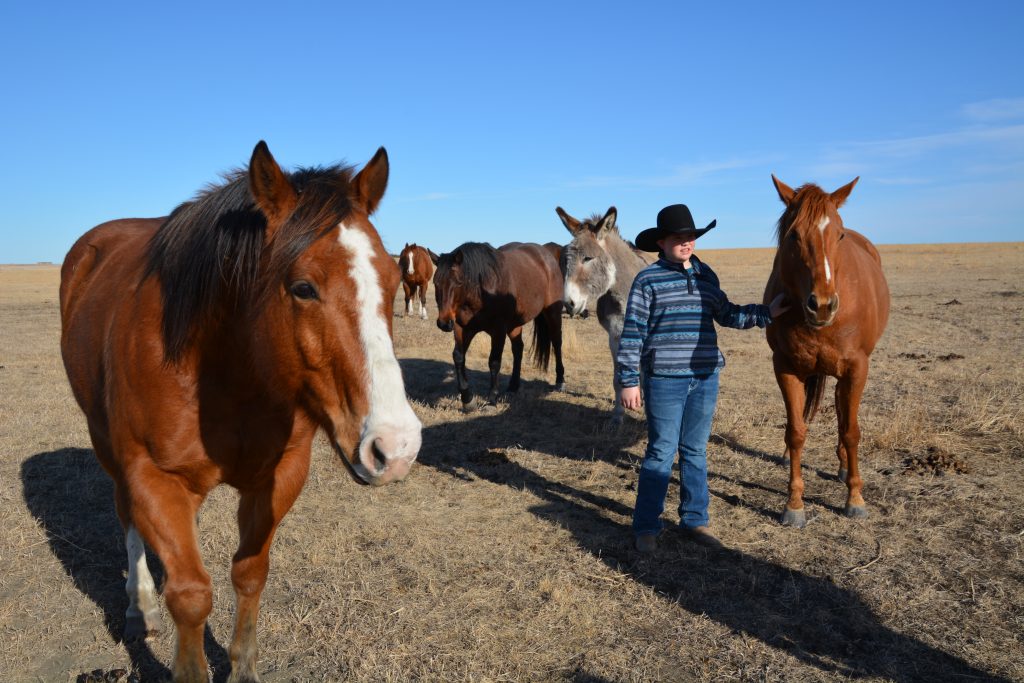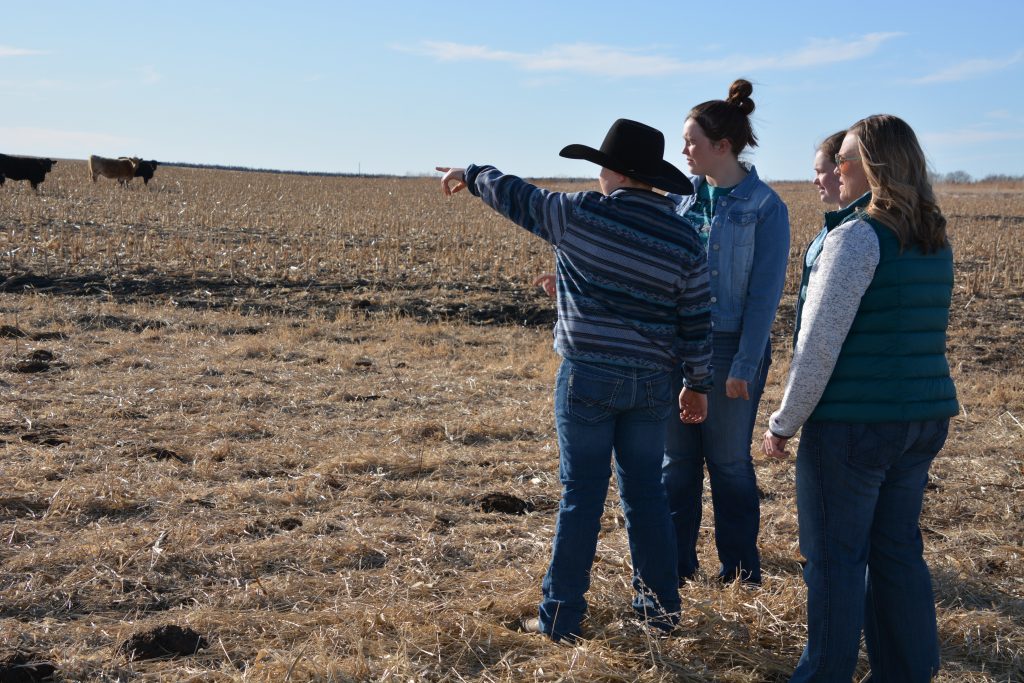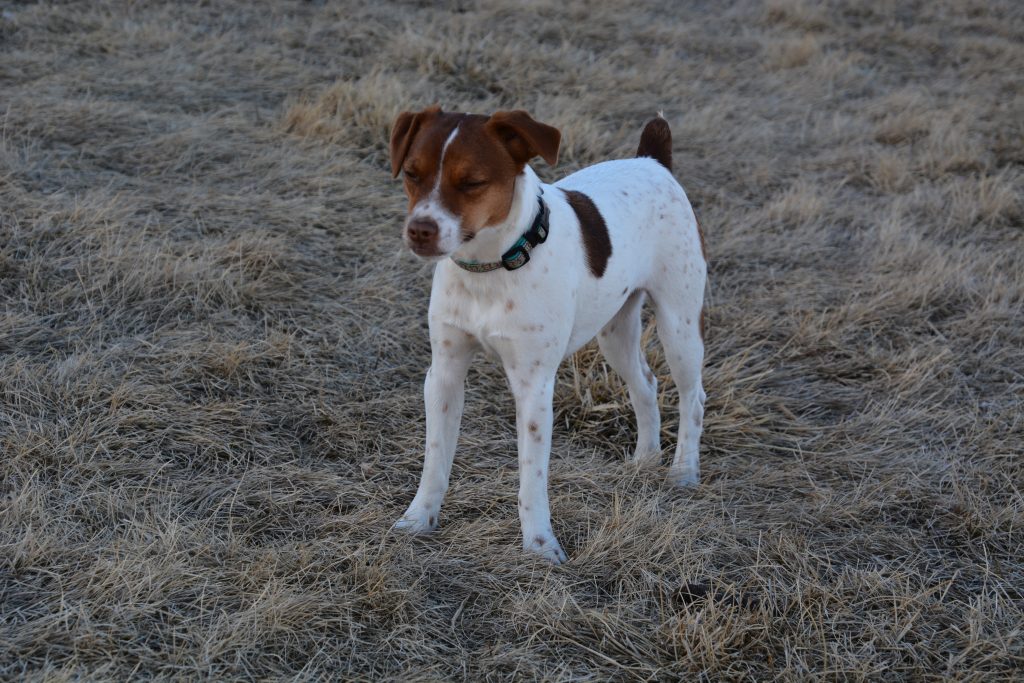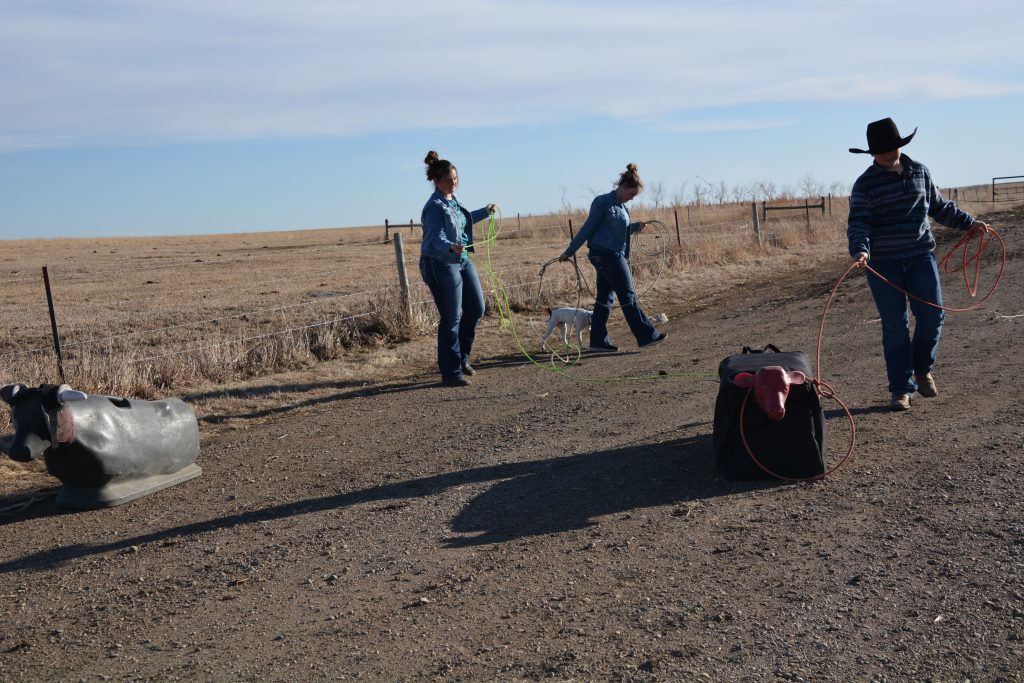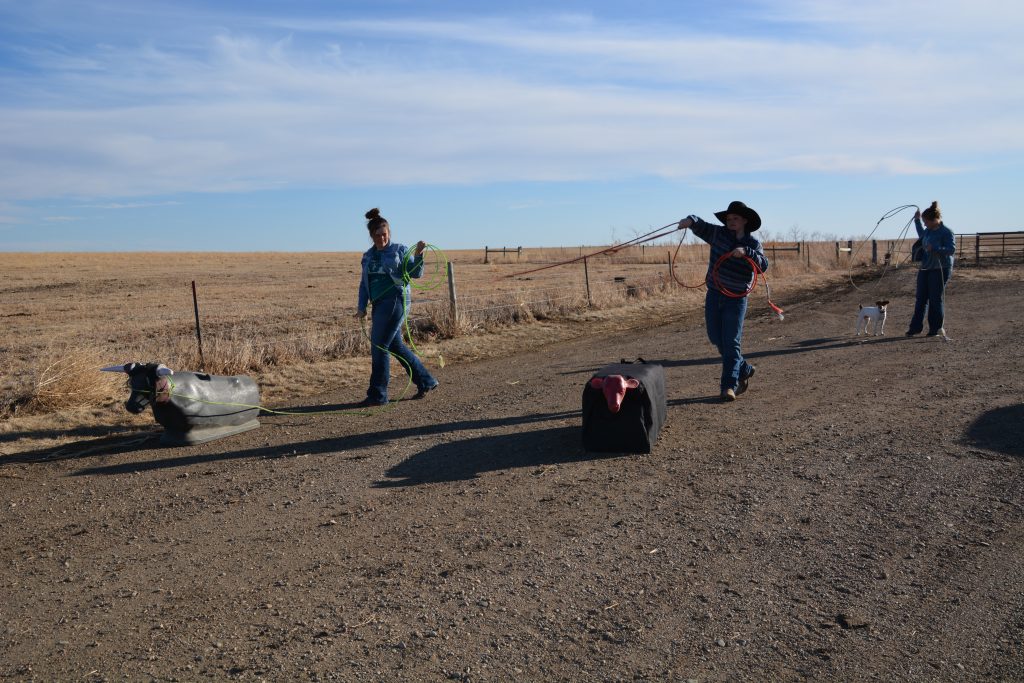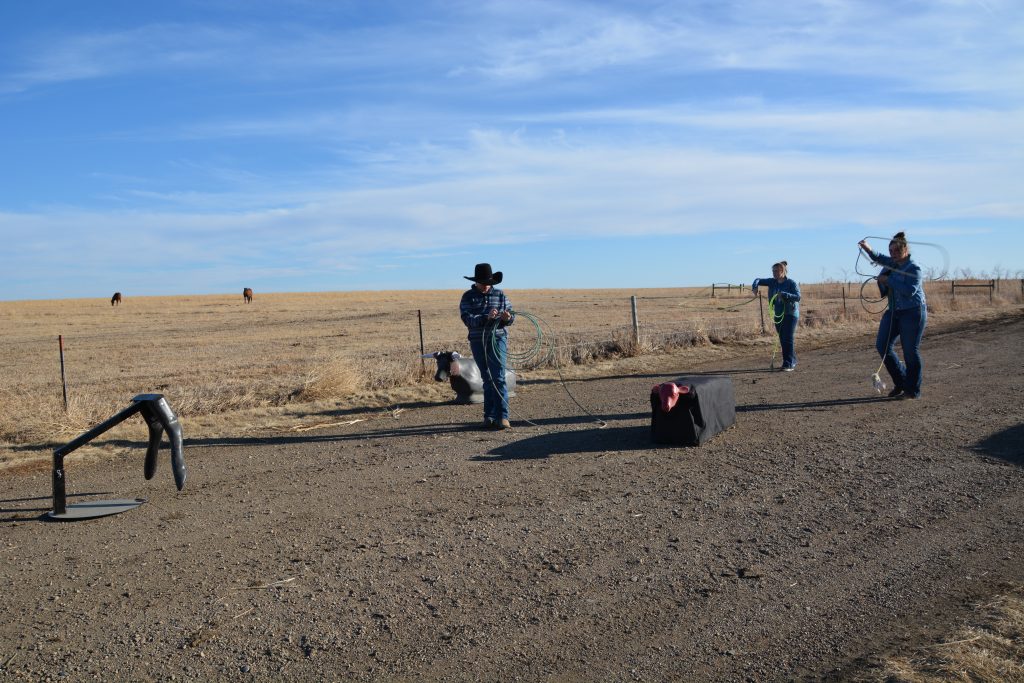Ness Family
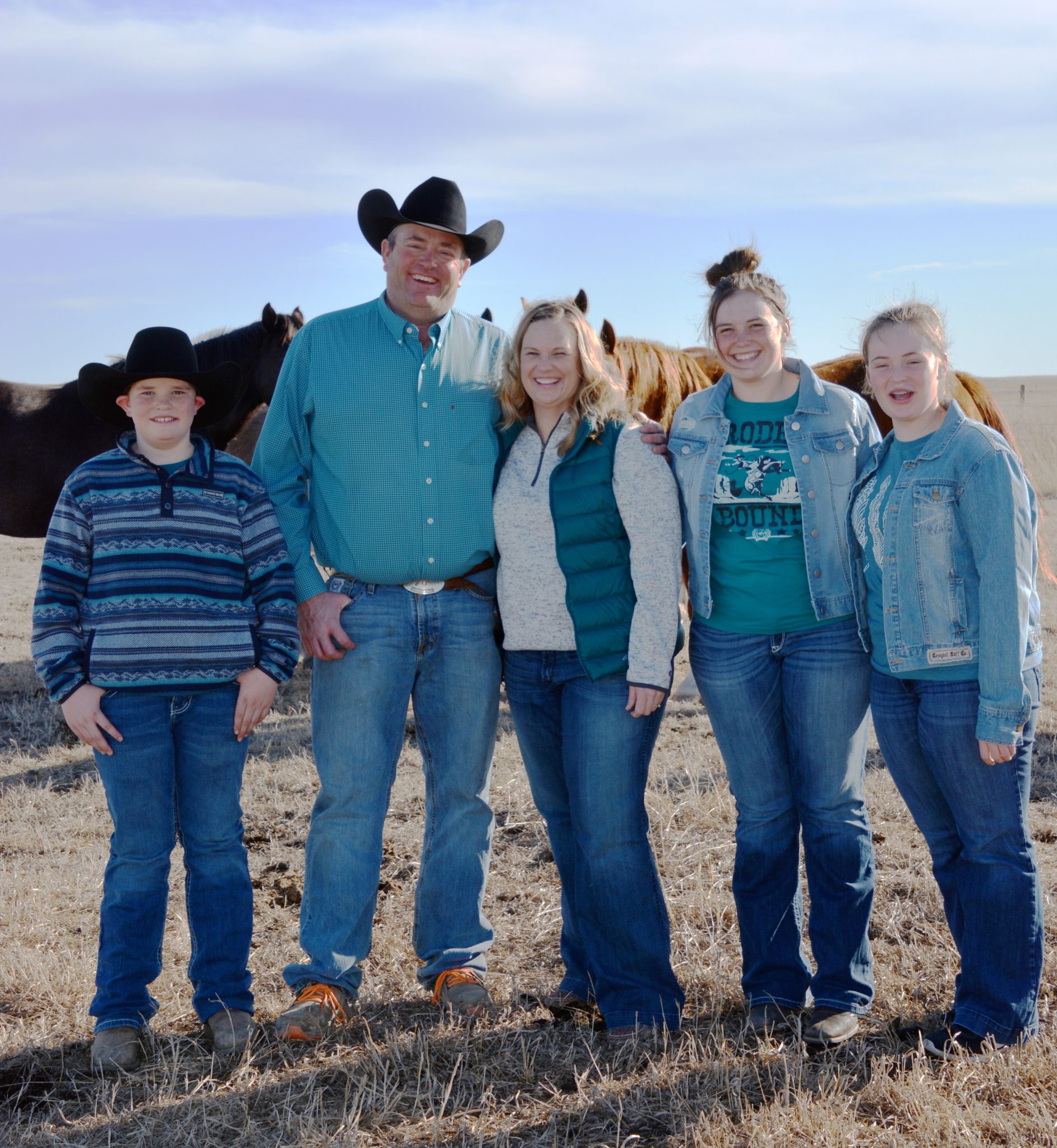
By Lura Roti for South Dakota Farmers Union
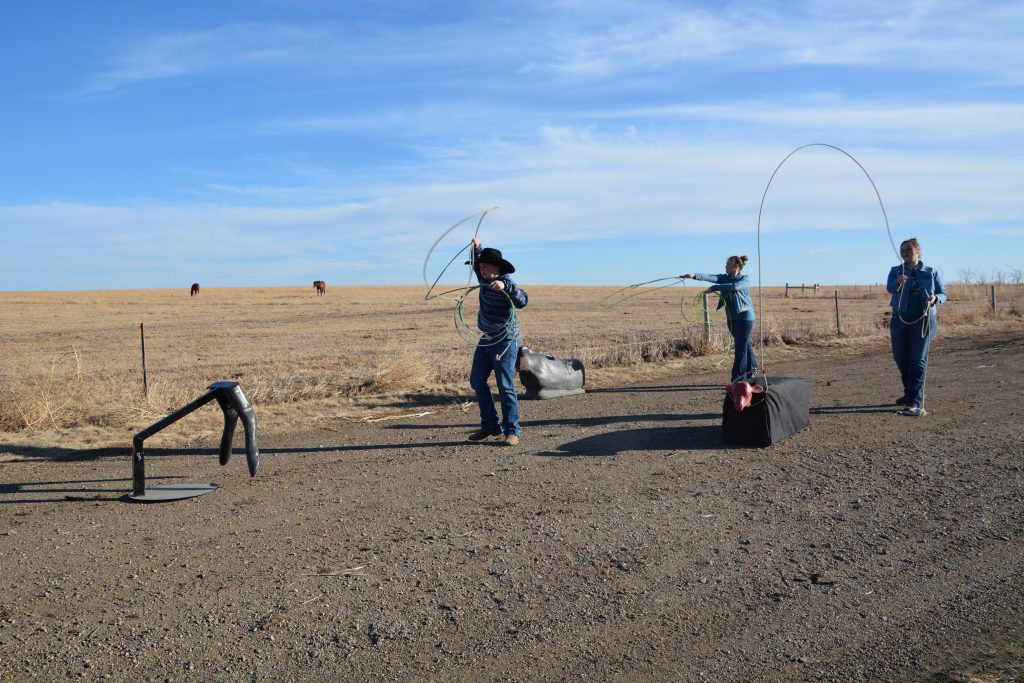
Visit the Ness ranch most any spring or summer evening after chores and you are bound to find siblings Swayze, 16, Shayda, 14, and Synch, 12, in the middle of roping practice.
“We rope a dummy every night and have contests to see who can rope better. Whoever loses has to do dishes,” explains 14-year-old Shayda.
Whether it’s rodeo, 4-H, fixing fence or working cattle, the Ness family enjoys the time they spend together on their family’s ranch, explains mom, Sasha. “It’s a good place to raise kids because there’s always something to do. Probably more than they would like some days. Always chores to do, cattle to work or move and horses to ride. It keeps them busy and out of trouble.”
A fourth-generation cattle producer, Sasha grew up on a ranch near Faith. She met LeRoy when they were both students at South Dakota State University.
The two had a lot in common. Both grew up raising cattle. Both were active 4-H members and enjoyed rodeo. Before they met, LeRoy had already decided he was going to continue the ranching legacy his dad began.
“When my dad bought this place in 1968, there was only a well and an old hog house,” LeRoy says.
His dad set right to work investing in improving two quarters of land. He implemented rotational grazing and planted several shelter belts. Tragically, when LeRoy was only 19, his dad was killed in a car accident. “I felt I needed to take on the family legacy.”
Following his dad’s death, the cattle and equipment were liquidated. So, in 1998, LeRoy began rebuilding – buying cows and leasing the land from his mom, Linda. In 2000 LeRoy and Sasha married.
Although he wanted to continue his dad’s legacy, LeRoy says it wasn’t obligation that brought him back to the ranch. He says raising cattle and caring for grassland feels like what he was always meant to do. “I enjoy everything about it – calving, processing, handling and working on corral systems,” he says. “And I’m very big into grass management.”
In fact, while ranching, LeRoy also spent more than a decade working as a range management specialist for the South Dakota Grasslands Coalition.
His interest in grassland management is also part of his dad’s legacy. “My dad was into rotational grazing and back in the ’80s, he was one of the first people in the county to buy a no-till drill.”
Over time, LeRoy has converted cropland back to pastureland and intensified the rotation schedule.
“We move the cattle every 3-7 days,” he explains. “I really enjoy seeing the grassland flourish as it returns to what nature intended it to be with a lot of different grasses.” His efforts are paying off. Today, several native grass species have returned, and the healthier rangeland can support more animal units. “My dad could run 160 cows for six months. On that same land, during my best year, I can run 240 cows for eight months.”
LeRoy says he still sees room for improvement. “The dung beetle has not returned yet,” he says, explaining that the work the beetle does to break up and bury manure improves soil health and reduces fly issues.
To further improve the land, he plans to intensify grazing even more. “Animal impact is a big deal. I would love to move my cattle twice a day to increase hoof action. My goal for most of my grass is to only have critters on it 10 to 14 days and otherwise leave it resting the remaining 350 days.”
Intense grazing does require more labor, and both LeRoy and Sasha spend some of each week working off the ranch. LeRoy is a fieldman for Kimball Livestock Exchange, he also sells semen for Genex. Sasha works for Kimball Livestock part time.
LeRoy and Sasha also have a feedlot where they background cattle and do some custom feeding.
To keep up with on-ranch work, the family all chips in to help with morning and evening feedings. They also breed their cows to calve in May. “We have nearly no calving difficulties and the weather lets us calve out on a quarter section of grass. And the cows need a lot less to make it through the winter so we save on feed costs,” LeRoy says.
“We can go out and check calves in short sleeves and on horseback,” Sasha adds.
This calving season things will be a bit different. Because after leasing land from his mom for more than 20 years, the couple sold their cow herd to help finance purchasing the ranch in fall 2020. “If it were not for my mom leasing this land to us all these years, we would not have been able to do this,” LeRoy explains. “Taking over ownership is kinda scary, but it is the right time.”
They are building their herd back by purchasing bred heifers.
“My vision for this place has always been to leave it better for the next generation,” LeRoy says.
And right now, the next generation appreciates the opportunity, explains their 16-year-old daughter, Swayze. “A 9-to-5 job sounds nice, but I really don’t see myself doing that after growing up outside with horses and in nature.”
A sophomore in high school, Swayze says she is exploring career options that will allow her to spend time with livestock or outdoors. In addition to chores and rodeo, Swayze and her siblings are also actively involved in 4-H.
“I enjoy being able to work with and show cattle – especially the people I get to meet doing it and friends I get to see,” Swayze says.
Through 4-H, the Ness kids have developed showmanship and public speaking skills, and most recently, Synch also learned how to trap. “I belong to a 4-H trapping club. We talk all about the traps, and what tracks to look for and how to set the traps,” explains the 12-year-old. “I like setting traps and coming in every day to see if I caught anything.”
LeRoy and Sasha appreciate the life skills their children gain through involvement in rodeo and 4-H. “It’s not all about purple ribbons. When they don’t win the ribbon they want, that’s how they learn how to handle hard things life throws them,” LeRoy explains.
And like everything on the Ness ranch, the entire family gets involved, Sasha and LeRoy serve as 4-H leaders.



